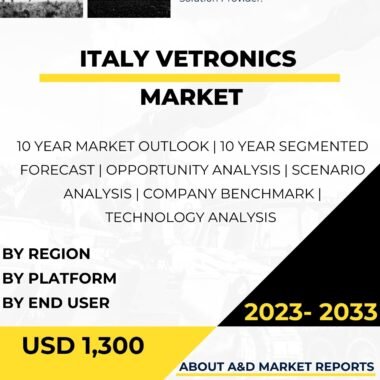Description
The defense simulation market in Malaysia has witnessed significant growth in recent years, driven by the country’s increasing focus on modernizing its armed forces and enhancing its defense capabilities. As a rapidly developing nation in the Southeast Asian region, Malaysia recognizes the importance of leveraging cutting-edge technologies and training methods to ensure its military personnel are well-prepared for diverse and evolving security challenges.
One of the key factors contributing to the growth of the defense simulation market in Malaysia is the government’s commitment to investing in defense infrastructure and training. With a strategic location and a history of regional geopolitical tensions, Malaysia understands the importance of maintaining a strong and capable armed forces. Defense simulation technologies play a critical role in this effort by enabling realistic and cost-effective training scenarios for the military.
In recent years, Malaysia has actively sought partnerships with leading global defense simulation companies and technology providers. These collaborations have allowed Malaysian defense forces to gain access to state-of-the-art simulation solutions, covering a wide range of military training needs. From virtual reality-based combat simulations to sophisticated flight simulators for pilots, these technologies offer a safe and immersive environment for honing tactical skills and decision-making abilities.
The utilization of defense simulation technologies is not limited to the army alone; other branches of the Malaysian military, such as the navy and air force, also benefit from these advancements. Maritime simulation systems help naval personnel enhance their maritime domain awareness, train for complex naval operations, and practice coordinated responses to maritime security threats. Likewise, air force personnel benefit from flight simulators that replicate real-life flying conditions, allowing pilots to develop their flying skills without the costs and risks associated with live training exercises.
Moreover, the defense simulation market in Malaysia extends beyond military applications. The country’s growing interest in disaster preparedness and crisis management has prompted the adoption of simulation technologies for civilian agencies. These simulations facilitate training for disaster response teams, police forces, and other emergency services, enabling them to enhance their capabilities in handling various crisis situations effectively.
The Malaysian defense simulation market is not just driven by external partnerships but also by domestic research and development efforts. Local defense companies and research institutions have been encouraged to contribute to the development of indigenous simulation solutions. This dual approach, leveraging both foreign expertise and homegrown innovation, has created a diverse ecosystem that fosters technology transfer and enhances Malaysia’s defense self-reliance.
In line with global trends, Malaysia has also embraced the potential of Artificial Intelligence (AI) and Machine Learning (ML) in defense simulations. AI-powered simulations can generate dynamic and adaptive scenarios, tailoring the training experience to individual soldiers or units, thereby increasing the efficiency and effectiveness of training programs. These AI-driven simulations allow the military to analyze performance data and identify areas for improvement in real-time, resulting in more agile and responsive armed forces.
Despite the remarkable growth and progress in the defense simulation market, some challenges persist. Budget constraints and resource limitations can sometimes hinder the scale and scope of simulation deployments. Balancing the acquisition of advanced simulation technologies with other defense priorities remains a continual challenge for the Malaysian government.
Additionally, cybersecurity poses a significant concern. As defense simulations become more connected and reliant on network infrastructure, ensuring the security and integrity of these systems becomes paramount. Cyber threats, both external and internal, could potentially compromise sensitive military training data and disrupt training operations.
Looking ahead, the Malaysian defense simulation market is expected to continue its growth trajectory. The government’s continued commitment to modernizing the armed forces, coupled with advancements in simulation technologies, will drive further investments in this sector. Additionally, as Malaysia positions itself as a regional player in defense training and security cooperation, the demand for advanced simulation solutions is likely to increase further, presenting both domestic and international opportunities for defense companies and technology providers.
In conclusion, the defense simulation market in Malaysia has experienced substantial growth and transformation. Leveraging the potential of cutting-edge technologies, the country’s armed forces have made significant strides in enhancing their readiness and preparedness. As the nation continues to invest in defense infrastructure and foster innovation in the sector, Malaysia is well-positioned to strengthen its defense capabilities and contribute to regional security and stability.




